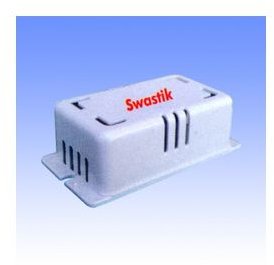Electric Ballast: Light, Lamps & General Electric Ballasts Advantage & Working
Introduction
Electric ballast is a device which controls the amount of current passing through an electrical circuit. Electric ballast, as the name suggests, is a kind of current reservoir, which provides a higher frequency alternating current to a circuit wherein the electrical load continuously fluctuate the current. Electric ballast also limits a higher current passing through the circuit. Electric ballast is generally used in the electrical circuit which provides a differential or negative power output.
The type of ballast used in a circuit varies according to the type, size, and requirement of the circuit. For e.g. the general neon lights would require electric ballast in the form of a simple series resistor, whereas applications with higher level of current fluctuation will require more sophisticated electric ballast.
Working of Simple Electric Ballast
Working of electric ballast depends on the type of the resistor used in it. The resistor compensates for the fluctuation of electricity in the circuit. According to the requirement, the resistor can be a fixed or variable one. A fixed resistor is used in ballasts dealing with low loads such as neon lights and LEDs. This is because the resistance provided by the fixed resistor will be higher than any fluctuation of current in such low power circuits.
A variable or self-variable resistor is used in systems dealing with heavy loads. This type of resistors can easily increase or decrease their resistance with the change in current. The construction of self-variable resistor ballast consists of a tungsten filament, which acts as a sensor. When the current increases suddenly, the tungsten filament gets hotter, increasing the resistance and decreasing the voltage. In the same way if the current reduces, the tungsten filament gets cold, reducing the resistance and increasing the voltage. Thus, the resistor maintains the current flowing through the circuit at an appropriate level.

Working of Advanced Electric Ballast
A lot of power is lost in controlling the fluctuating current using resistors. For this reason, resistors are not used in applications having electrical load of more than 2 watts. Instead of resistors, a reactance is used. However, because of the losses due to the magnetic core inside them, a significant amount of energy is lost in both of them, and thus an inductor is used.
An inductor allows less energy loss and uses all the power saved in a more efficient manner. However, an inductor results in a current which is out of phase and has a poor power factor. The power factor is the measure of actual power divided by the apparent power. The more the power factor the more number of appliances can be used in the same circuit. To solve this problem, a capacitor is used along with the inductor to improve the power factor. The use of capacitor reduces the flicker of lamps, maintains a higher power factor, and balances phase relationships between all the lamps.
Also, if the lamps are large, higher voltage is required for the starting purpose and for this reason advanced electronic ballasts are used. In gas discharge lights, electronic ballasts maintain the starting and operating voltages and thus limit the flow of current through the equipment. Moreover, most of the modern electronic ballasts can operate lamps at higher frequencies as they use semi-conductor component circuitry rather than the conventional electro-magnetic transformer circuit. Also, as they use semi-conductor components, very less amount of heat is generated. Moreover, electronic ballasts operate at high frequency, which also increases the efficiency of the lamp.
What Happens Inside the Electric Ballast?
Electric ballast mainly consists of a rectifier circuit, a capacitor, an amplifying circuit, and a high frequency inverter transformer. A high voltage lamp requires a high frequency voltage for its operation. Electric ballast can be divided into three main stages. In the first stage, the rectifier circuit increases the incoming voltage to almost double. The voltage then goes to the second stage wherein the capacitor filters it for the next stage. The capacitor converts the incoming voltage to the working voltage and sends it to the next stage. In the third stage, the inverter transformer increases the frequency and the voltage of the current. Thus the output will have a low current but a higher voltage, which would help in starting the lamp without any flickers, utilizing less electricity and increasing the overall efficiency.
Thus, electric ballast balances the power supply to provide smooth current to the devices, and thus reduces wastage of electricity and protects the devices.
References
image credits
